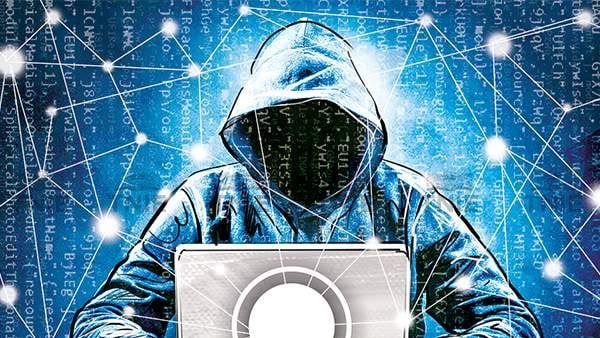Author -Shalini Jha.
Co-author -Rohan R. Patil.
INVESTIGATING THE LEGAL CHALLENGES OF E- CONTRACTS AND E- SIGNATURE.
ABSTRACT
In today’s era contracts has played a very major role in deciding the liabilities of the involved parties. But there’s also an jurisdictional variation rules and laws regarding the recognition and enforceability of e- contracts and e- signatures. In a country like US has the E- sign Act and UETA that broadly validate e-signatures, the European Union follows the eDIAS regulation, which has its specific requirements. basically In India there are no laws and regulations that directly relate to e -contracts but some of the laws which contains certain rules and regulations for example- The Indian Contract Act,1872 includes all the rules applicable to contract required to form a legal contract. Whereas The Information Technology Act, 2000 is another significant legislation specifically addressing the electronic contracts and e- commerce transactions in India. It provides the legal recognition and validity to electronic records and digital signatures. But in a country like India where the IT Act 2000 provides legal recognition to electronic contracts and electronic signatures. However certain types of documents, such as wills, negotiable instruments, power of attorney, and real estate documents, still require traditional signatures. Sometimes Ensuring that consumers fully understand and consent to the terms of an e- contract is a significant issue. The legal challenges of e- contracts and e- signature in India are multifaced, involving issues of recognition, security privacy and jurisdiction, consumer protection and compliance. India is still in the process of developing comprehensive data protection laws. And Most of the time many users including businesses and consumers are not fully aware of the legal implications and the best practice for using e- contacts and e-signatures. Its high time to address these challenges.
KEYWORDS
UETA, E- commerce transaction, Fraudulent transactions, public awareness campaigns.
INTRODUCTION
The concept of E- contract includes minimum two people utilizing electronic means to enter into in a contract which is just a click away. There is an improvement of the electronic commerce framework with the change in time. Electronic trading includes the buying and selling of an item and payment through electronic medium. Section 2 of the Indian Contract Act,1872 defines a contract as an agreement enforceable by law. E-contract is any kind of contract formed by the interaction of two or more people through an electronic medium. There are two parties to an E -contract, Originator and Addressee as mentioned in section 2(1)(za) and Section 2(1)(b) respectively of the Information Technology Act,2000. The originator is the one who sends, generates stores or transmits the data to the addresses without the intermediary being included. The addresses is the one who intended to receive the record set by the originator without an intermediary being included.
GLOBAL ANALYSIS OF E- CONTRACT AND E-SIGNATURE.
A Global Analysis of e-contracts and e-signatures shows a complex but evolving legal landscape that is influenced by both local legislation and international frameworks.
- LEGAL FRAMEWORKS BY REGION.
United states – The U.S has well -established laws recognizing e- contracts and e-signatures.
WHAT IS THE ROLE OF ELECTRONIC SIGNATURE IN GLOBAL AND NATIONAL COMMERCE ACT, 2000
The act ensures that electronic contracts documents and signature carry the same legal standing It also ensures that electronic signatures are legally binding just like handwritten signatures. This has greatly enhanced the efficiency of online and electronic transactions. It facilitates the E-commerce it plays a very vital role in supporting the growth of e-commerce by removing the requirement for paper- based signatures and physical records, thereby reducing transaction times and costs.
It ensures that online business agreements, financial transactions, and commercial contracts can be legally executed using e-signatures. The E-sign Act Aligns with the global trend toward recognizing electronic signatures. It complements international frameworks like the “United Nations Commission on International Trade Law (UNCITRAL) Model law on Electronic Commerce and other country laws that promote the use of electronic signatures In a global trade. The Act specifically includes the provisions to protect consumers. For instance Before a consumer can use an electronic signature for a transaction, they must give their consent to use e- signatures and the entity must disclose any rights or implications of this consent. The E-sign Act allows businesses and government entities to retain electronic records instead of physical copies as long as the records are accurate , accessible and reproducible. The E-sign Act has been a cornerstone of legal developments in Digital Transactions. By establishing a clear legal framework for e-signatures.
ELECTRONIC SIGNATURE AND ELECTRONIC AUTHENTICATION TEVHONOLOGY. (ESEATPR)
It typically refers to laws and regulations designed to govern and regulated the use of electronic signatures and electronic authentication technologies in electronic transactions. These frameworks ensure that e- signatures are recognized as valid and enforceable in legal authentication technologies. These Frameworks ensure that e-signatures are recognized as valid and enforceable in legal and commercial transactions subject to certain conditions.
Legal Validity of E-Signatures – The Primary role of an ESEATPR Framework is to grant Legal Recognition to electronic signatures, ensuring they have the same legal effect as traditional handwritten signatures. It defines what constitutes an electronic signature and under what conditions it can be used.
Authentication and Security- ESEATPR describes the standards for electronic authentication technologies to ensure the integrity and security of e-signatures. These standards often involve the use of digital certificates, encryption and public key infrastructure (PKI) to verify the identity of the signatory and ensure the document has not been tampered with after signing.
Enforceability of E-Contracts- ESEATPR laws typically affirm that electronic contracts are as important as traditional paper contracts, provided they meet certain conditions, such as mutual consent and clear intent to form a contract. These laws apply to a wide range of transactions, from commercial contracts to real estate transactions and beyond.
Consumer Protection – ESEATPR frameworks often include provisions for consumer protection. For ex- consumer may be required to give explicit consent to use electronic signatures, and they must be provided with clear information on how their e-signature will be used.
Regulation Of Service Providers- ESEATPR framework regulate the activities of ‘Certification Authorities (Cas) and Trust Service Providers which issue digital certificates and ensure the security of electronic signatures. These regulations ensure that these providers follow strict security protocols. The Indian IT Act,2000 This specifically provides a legal framework for the electronic signatures and
HOW TO OVERCOME FROM THE PROBLEM OF FORGERY IN E- CONTRACT AND E-SIGNATURE.
- Use of Digital Signatures and Encryption- Digital signatures use cryptographic techniques to secure the authenticity of the signature. Each party is assigned a pair of cryptographic techniques to secure the authenticity of the signature.
- Public key Infrastructure – PKI is essential to digital signatures, providing a secure framework for managing digital certificates and encryption keyus making forgery extremely difficult.
CONCLUSION – To overcome from this problem Blockchain technology can be used.
– Blockchain can be used to secure e-contracts and e-signatures by creating a decentralized and immutable ledger that records each transaction (signature or change) in the contract. This makes it extremely difficult to forge or alter documents without detection.




